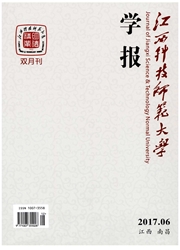

 中文摘要:
中文摘要:
高光谱图像解混方法中基于稀疏性的混合像元分解方法成为近来研究的热点,其中稀疏正则化高光谱混合像元分解方法(SUnSAL)得到了较好的解混效果。尽管如此,但正则化解的稀疏性和稳健性并不好。基于正则子比正则子更易于求解,同时比正则子具有更好的稀疏性和稳健性,本文引入用正则子来代替正则子。同时,采用了一种简单有效的稀疏正则化的求解方法,将正则化非凸优化问题转化为一系列迭代重复加权正则化问题,并利用变量分裂和增广拉格朗目算法(ADMM)对加权正则化问题进行求解。实验数据表明,此方法不但实现简单,而且可以获得更好的混合像元分解精度。
 英文摘要:
英文摘要:
Sparse unmixing is based on the assumption that every mixed pixel in the hyperspectral image can be expressed in the form of linear combinations of a number of pure spectral signatures that are known in advance. Despite the success of sparse unmixing based on the lo or 11 regnlarizer, the limitation of this approach is its computational complexity or sparsity of the efficiency or accuracy. This paper chooses the lr2 norm as an alternative regnlarizer which is much easier to be solved than l0 regnlarizer and has better sparsity and robustness than 11 regularizer. Here, a l1/2 sparsity regularized unconvex variation model was proposed for the hyperspectral unmixing, namely SL1/2SU model. The unconvex optimization problem was simply transformed into a series of re-weighted l1 regularization problems, and they can be solved by variable splitting and augmented Lagrangian algorithm. The experimental results with both simulated and real hyperspectral data sets demonstrate that the proposed SL1/2SU method is an effective and simple spectral unmixing algorithm for hyperspectral unmixing,
 同期刊论文项目
同期刊论文项目
 同项目期刊论文
同项目期刊论文
 期刊信息
期刊信息
